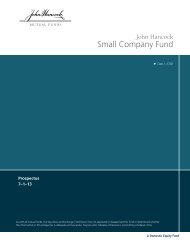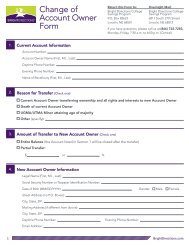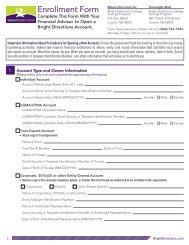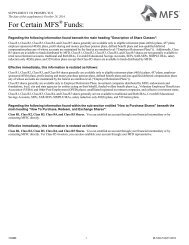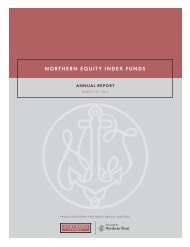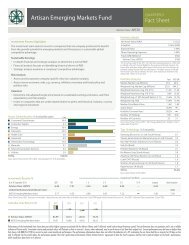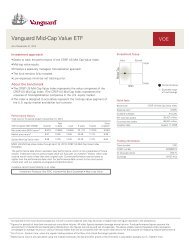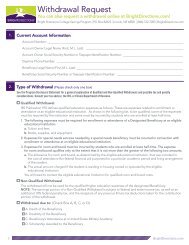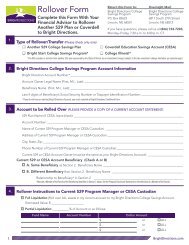Dodge & Cox Funds Statutoary Prospectus dated May 1, 2013
Dodge & Cox Funds Statutoary Prospectus dated May 1, 2013
Dodge & Cox Funds Statutoary Prospectus dated May 1, 2013
Create successful ePaper yourself
Turn your PDF publications into a flip-book with our unique Google optimized e-Paper software.
▪ Issuer risk. Securities held by the Fund may decline invalue because of changes in the financial condition of,or other events affecting, the issuers of these securities.▪ Management risk. <strong>Dodge</strong> & <strong>Cox</strong>’s opinion about theintrinsic worth of a company or security may beincorrect, <strong>Dodge</strong> & <strong>Cox</strong> may not make timely purchasesor sales of securities for the Fund, the Fund’s investmentobjectives may not be achieved, and the market maycontinue to undervalue the Fund’s securities.▪ Equity risk. Equity securities generally have greater pricevolatility than debt securities.▪ Market risk. Stock prices may decline over short orextended periods due to general market conditions.▪ Liquidity risk. The Fund may not be able to purchase orsell a security in a timely manner or at desired prices orachieve its desired weighting in a security.▪ Non-U.S. issuer risk. Securities (including ADRs) maydecline in value because of political, economic, ormarket instability; the absence of accurate informationabout the companies; risks of internal and externalconflicts; or unfavorable government actions, includingexpropriation and nationalization. These securities mayalso lose value due to changes in foreign currencyexchange rates against the U.S. dollar and/or currenciesof other countries. Non-U.S. securities are sometimesless liquid, more volatile, and harder to value thansecurities of U.S. issuers. Lack of uniform accounting,auditing, and financial reporting standards, with lessgovernmental regulation and oversight than U.S.companies, may increase risk. Some countries also mayhave different legal systems that may make it difficult forthe Fund to vote proxies, exercise shareholder rights,and pursue legal remedies with respect to investments.These risks may be higher when investing in emergingmarkets companies. Certain of these risks may also applyto securities of U.S. companies with significant non-U.S. operations.An investment in the Fund is not a deposit of abank and is not insured or guaranteed by the FederalDeposit Insurance Corporation or any othergovernment agency.PERFORMANCE INFORMATIONThe following bar chart and table are intended to helpyou understand the risks of investing in the Fund. The barchart shows changes in the Fund’s returns from year toyear. The table shows how the Fund’s average annual totalreturns for one, five, and ten years compare to those of abroad measure of market performance.The Fund’s past performance (before and after taxes)does not necessarily indicate how the Fund will perform in thefuture. Visit the Fund’s website at www.dodgeandcox.com orcall 800-621-3979 for current performance figures.DODGE & COX STOCK FUNDAnnual total returns 2004-<strong>2013</strong> (%)19.16049.360518.54060.1407−43.310831.270913.4810−4.081122.011240.55Highest/Lowest quarterly results during the time period were:Highest: 23.10% (quarter ended June 30, 2009)Lowest: –23.33% (quarter ended December 31, 2008)AVERAGE ANNUAL TOTAL RETURNSFOR THE PERIODS ENDED 12/31/<strong>2013</strong><strong>Dodge</strong> & <strong>Cox</strong>Stock Fund 1 Year 5 Years 10 YearsReturn before taxes 40.55% 19.63% 7.95%Return after taxes on distributions 40.06 19.33 7.33Return after taxes on distributionsand sale of Fund shares 23.25 16.04 6.53S&P 500 Index (reflects no deductionfor expenses or taxes) 32.41 17.94 7.4113After-tax returns are calculated using the historicalhighest individual federal marginal income tax rates, butPAGE 2 ▪ D ODGE & C OX F UNDS




